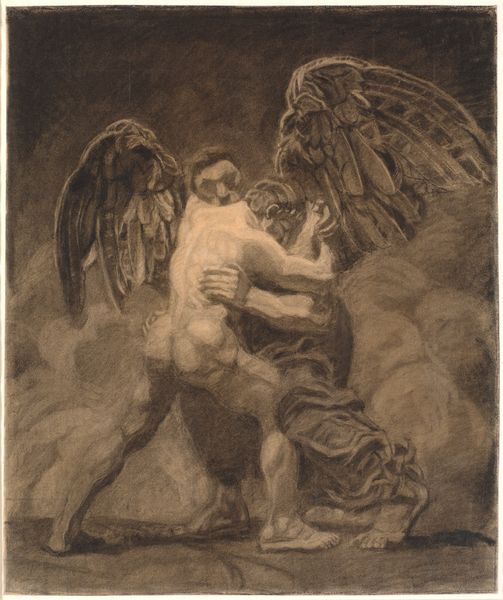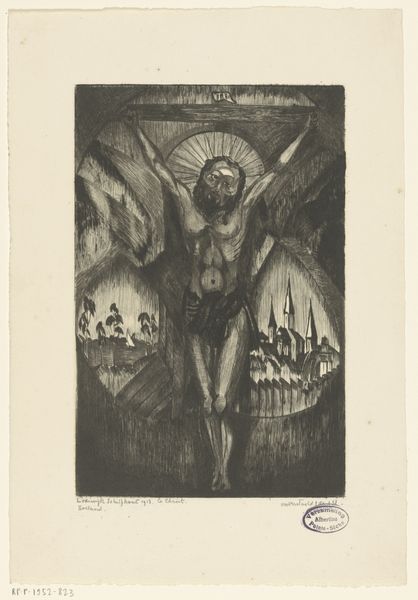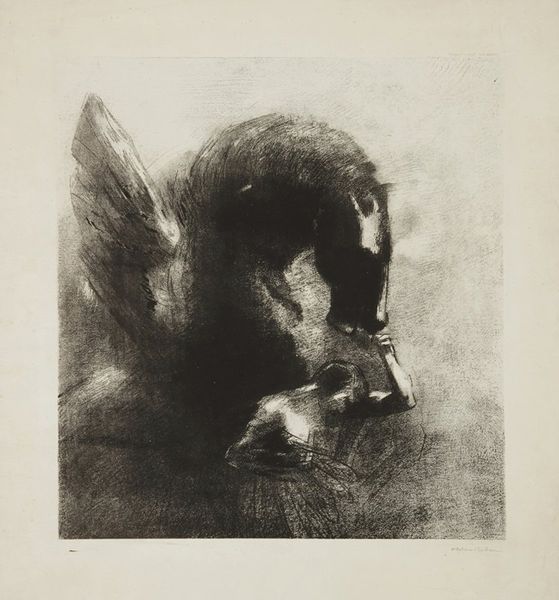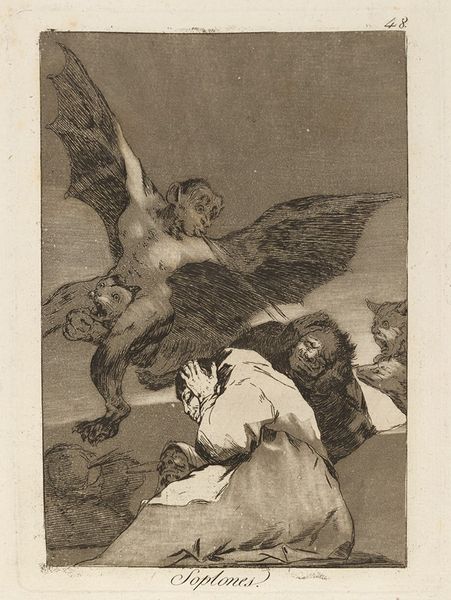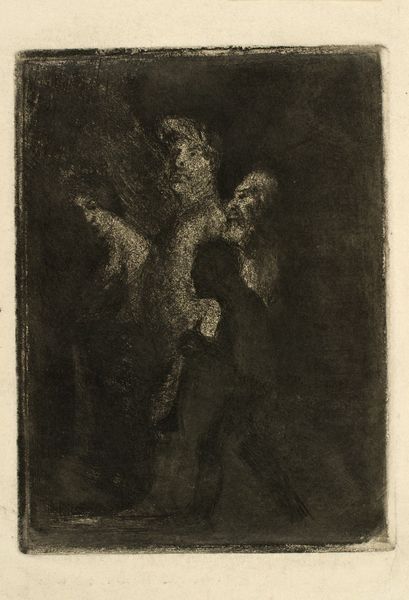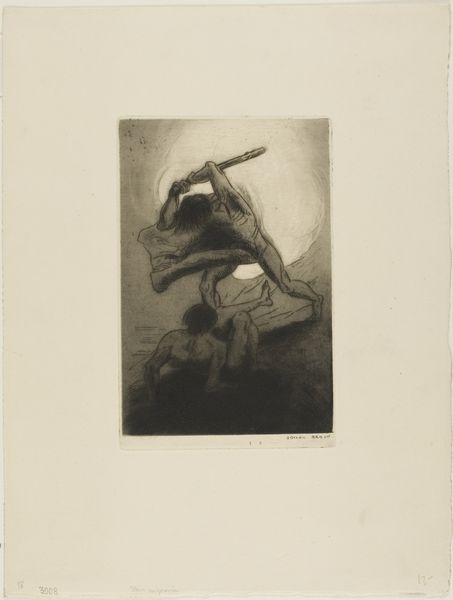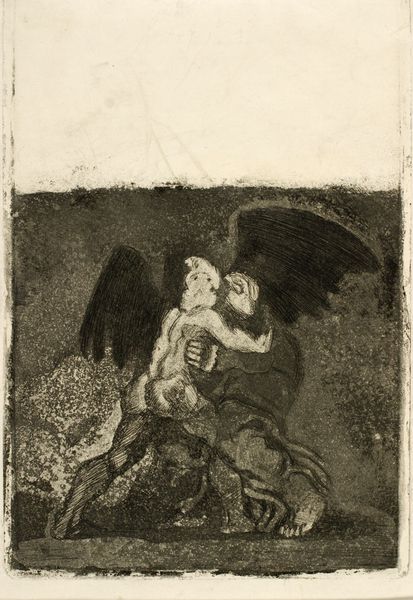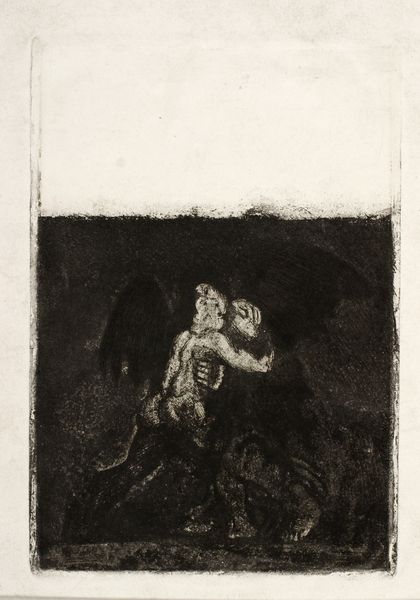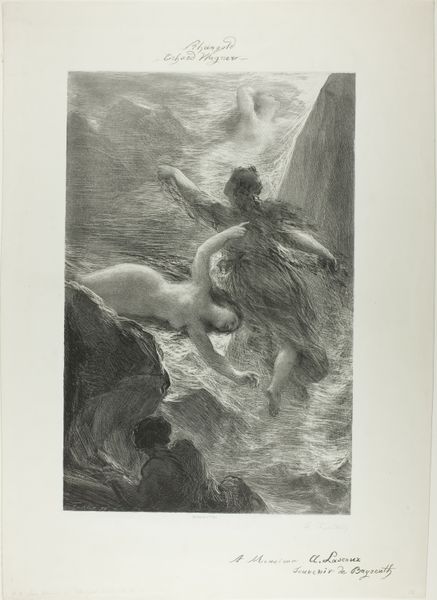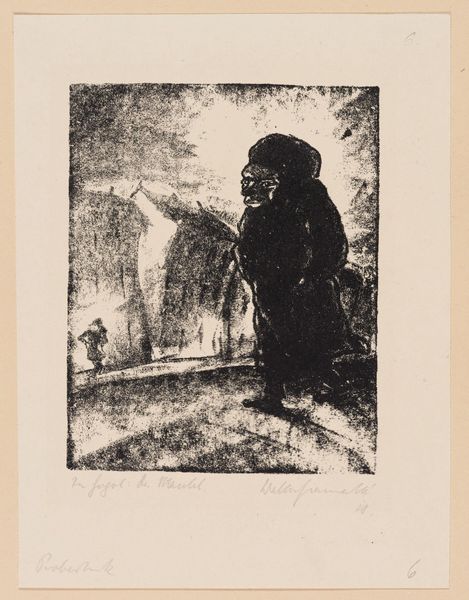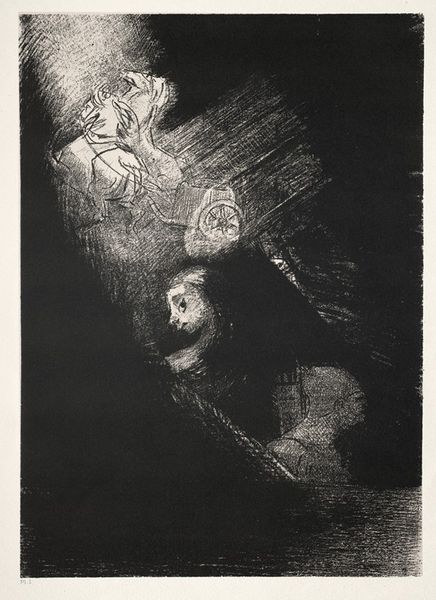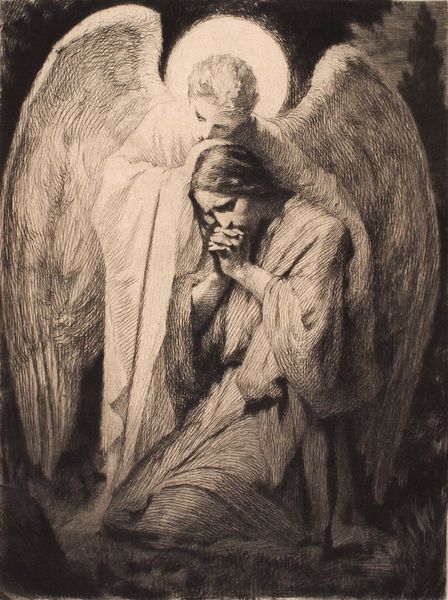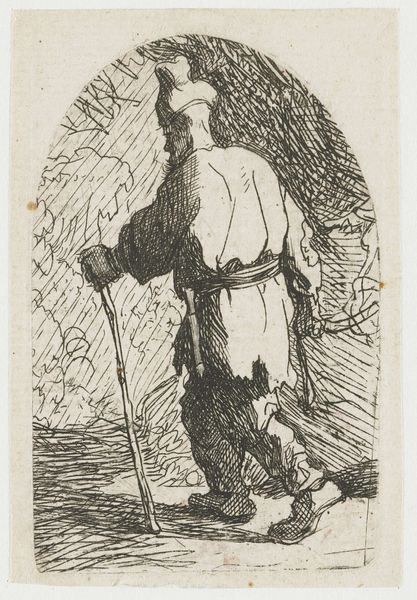
Gloire et louange a toi, satan, dans les hauteurs du ciel ou tu regnas, et dans les profondeurs de l'enfer, ou vaincu, tu reves en silence! (Glory and praise to you, Satan, in the heights of heaven, where you reigned, and in thedepths of hell, where, vanquished, you dream in s ilence!) 1890
lithograph, print
lithograph
figuration
symbolism
Copyright: National Gallery of Art: CC0 1.0
Curator: Right now, we're looking at a lithograph by Odilon Redon, created in 1890. The title is quite a mouthful, so bear with me: "Gloire et louange a toi, satan, dans les hauteurs du ciel ou tu regnas, et dans les profondeurs de l'enfer, ou vaincu, tu reves en silence!" Editor: Whoa. Even before knowing the title, this feels weighty. A powerful, looming presence emerges from this mottled, inky darkness. It has an imposing stature and... well, sadness? A really tragic gravitas. Curator: The title translates to "Glory and praise to you, Satan, in the heights of heaven, where you reigned, and in the depths of hell, where, vanquished, you dream in silence!" which captures that feeling. Editor: It totally does! I mean, Redon wasn’t exactly known for happy-go-lucky subject matter, right? This fallen angel vibe... it speaks to that whole fin-de-siècle mood. Decay, spiritual angst, but with this potent undercurrent of defiant beauty, somehow. The texture alone evokes torment. Curator: Absolutely. Redon was deeply engaged with symbolism. In that context, Satan isn’t simply a figure of evil. He can be a symbol of rebellion against orthodoxy, the questioning of established power, and the championing of individual will. He represents a fascinating, ongoing fascination with darker aspects of human experience. Editor: That's really interesting, because I think what grabs me the most are the wings. Even though they appear damaged or shrouded in shadow, they still carry such dramatic force. There’s almost something... romantic about it. Curator: It's the romanticisation of the outcast, perhaps. The solitary figure, doomed but unbowed. And those sharp contrasts, Redon manipulates the light to draw our eye toward the figure, highlighting both his suffering and inherent dignity. Editor: Definitely. He captures that simultaneous feeling of grandeur and abjection perfectly, a rebel forever in the making! Even centuries after it was made, this still has that potent immediacy, this sense of questioning and internal battle. Curator: Indeed. I’d say that, in a way, this print resonates so much because we all grapple with those forces, those opposing desires. Even if our struggles aren't quite as dramatic as a fall from heaven.
Comments
No comments
Be the first to comment and join the conversation on the ultimate creative platform.
